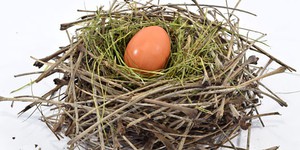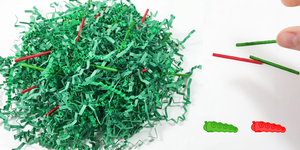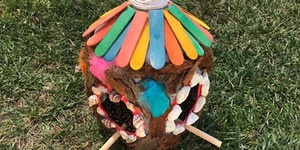Zoology Science Experiments (68 results)
Fun science experiments to explore everything from kitchen chemistry to DIY mini drones. Easy to set up and perfect for home or school. Browse the collection and see what you want to try first!
Animals have developed an amazing variety of body plans, behaviors, and strategies in order to succeed in the struggle for survival. Explore topics ranging from regeneration, camouflage, animal migration, how to attract hummingbirds, and more.
|
Select a resource
Sort by
|
STEM Activity
112 reviews
Have you ever wondered how predators, like wolves, lions, and hawks, are able to find their prey? And what can an animal do to stay off of a hunter's menu? To survive, some animals have developed specific camouflage tactics to fool their predators. One strategy some animals use is to look very similar to other animals that are poisonous or that the predator doesn't like to eat. This camouflage tactic is called mimicry. In this science activity, you will be the hungry predator and you will hunt…
Read more
Do you really catch more flies with honey than with vinegar? Do an experiment to find out! Watch the video above to learn how to make a simple homemade fly trap using a plastic bottle. Then, experiment to discover which bait attracts the most flies. You can try a variety of liquids, and you can also use solid bait like rotting food or meat, but you will need to add some water so the flies drown. A drop of soap can help break the surface tension of the water, making it easier for the flies to…
Read more
In the wild there are two types of animals: the hunters and the hunted. A good predator is always on the prowl for fresh prey. What can an animal do to stay off of the menu? Some animals have evolved to use a variety of camouflage tactics so they can fool their predators and increase their chances of survival. In this science project, you will be the hungry predator hunting for M&M® prey. But it may not be as easy as it sounds — some of your prey will be camouflaged. Will they be…
Read more
In this project, water fleas (Daphnia magna), a semi-transparent freshwater crustacean, are used to study the effects of caffeine on heart rate. Don't worry about having to learn how to take a crustacean's pulse: you can actually see the heart beating under a microscope. Many variations of this experiment are possible.
Read more
STEM Activity
61 reviews
Different types of birds lay their eggs in different places. Some build tiny nests in bushes, some build enormous nests in tall trees. Some lay their eggs directly on the ground or on rocky ledges. Those that build nests use many different types of materials. In this project you will try to build your own bird nest using only natural materials that you can find outside. Can you do better than a bird?
Read more
STEM Activity
19 reviews
If you could choose to be an animal, would you rather be a predator or prey? For prey animals, survival in the wild means a daily struggle to escape potential predators. Predators, on the other hand, have to work very hard to make a catch. Some prey animals have evolved clever strategies to protect or defend themselves against predators. One common strategy is camouflage. Camouflage allows animals to blend into their surroundings so predators can't see them. Will this strategy increase an…
Read more
Imagine the ocean water turning bright red or seeing ocean waves glowing a beautiful blue color. Sounds impossible—but it is not! Red tides and glowing waves are caused by microscopic organisms living in the ocean called dinoflagellates. Some dinoflagellates have the ability to produce light through a process called bioluminescence. When and how do these organisms glow? In this science project, you will investigate how changing the dinoflagellate's exposure to light and dark affects its…
Read more
STEM Activity
33 reviews
Did you know that there are about 10,000 different types of birds in the world? You don't have to go far to see some of them. Birds live outside in backyards and parks and can even be found in a busy city! Do you know what kinds of birds live in your neighborhood? Have you ever taken a close look at the birds you see in your backyard to identify them and observe their behavior? In this activity, you will build a bird feeder to attract birds, so you can study them.
Read more
STEM Activity
54 reviews
Have some pesky flies in your kitchen that you cannot seem to get rid of? In this project you will build your own simple fly trap from a plastic bottle. Get ready to get rid of those flies!
Read more
Have you ever seen butterflies fluttering around outside, gliding through the air and landing on flowers? While they are delicate and fragile, butterflies are actually excellent flyers. They are so good, in fact, that scientists at Harvard University studied butterfly wing shapes as an inspiration for building a miniature flying robot. In this science project, you will do your own version of the Harvard scientists' experiment to measure the flight performance of butterfly wings.
Read more
|















